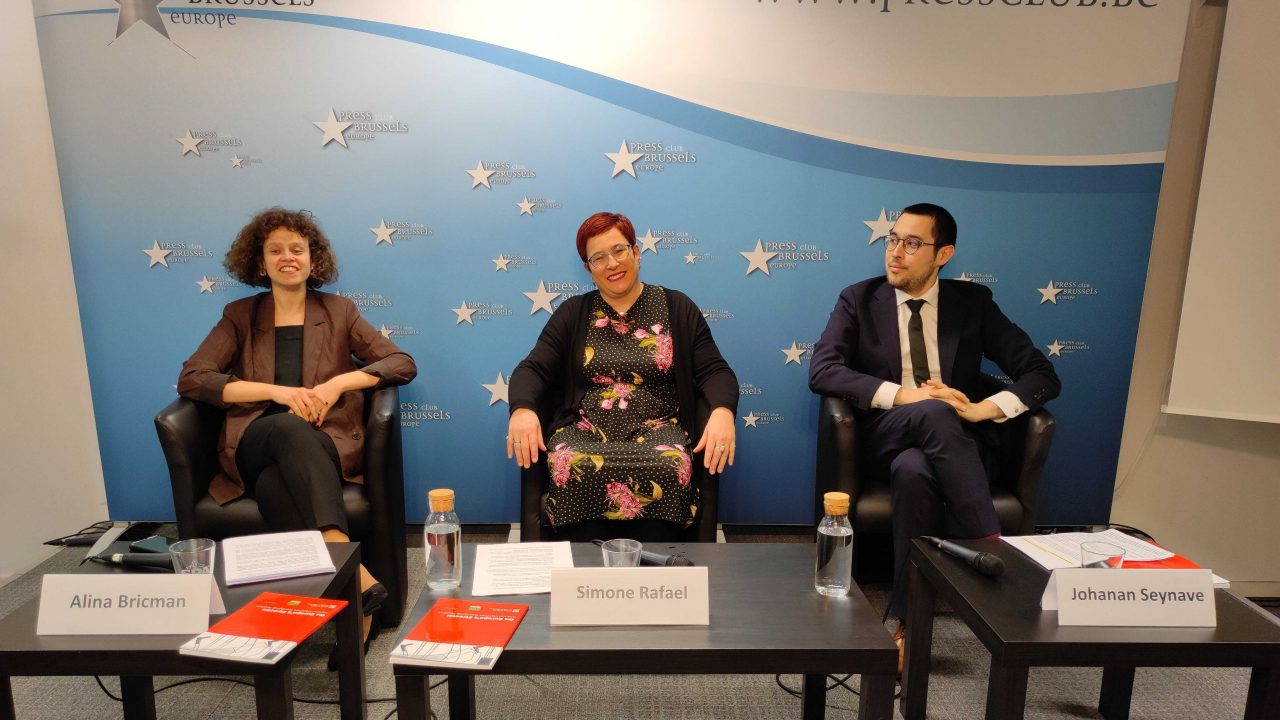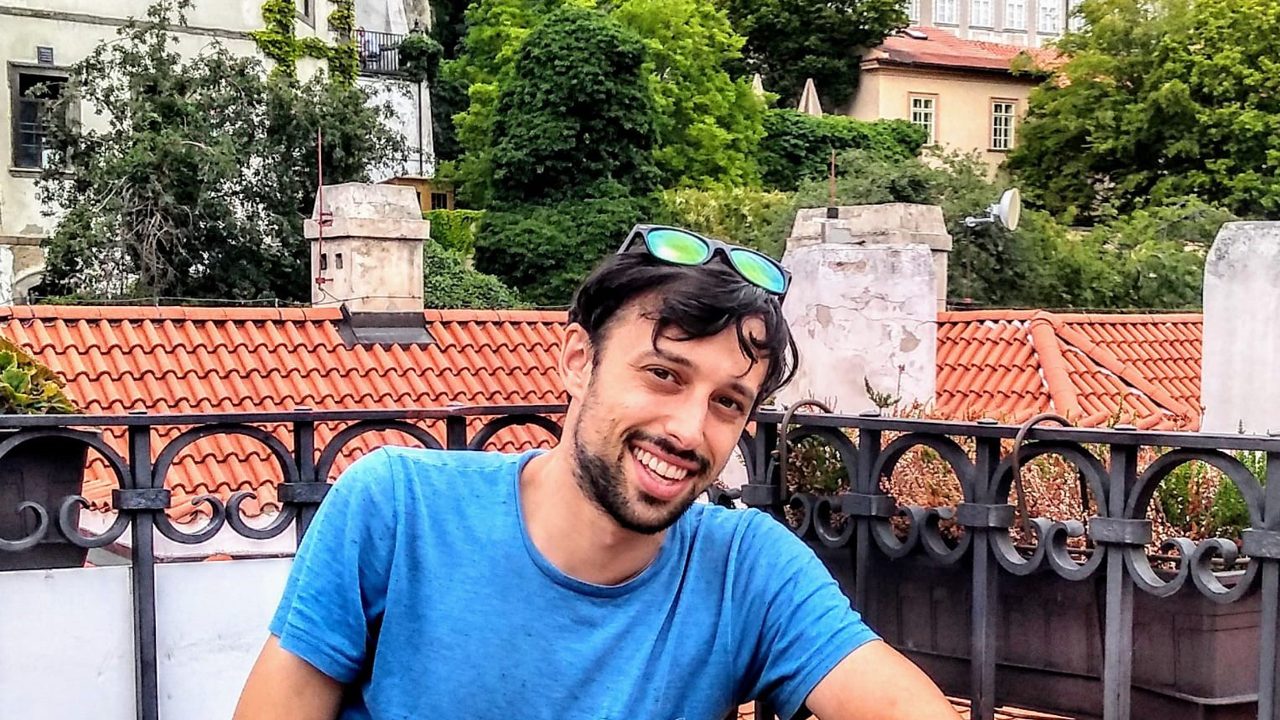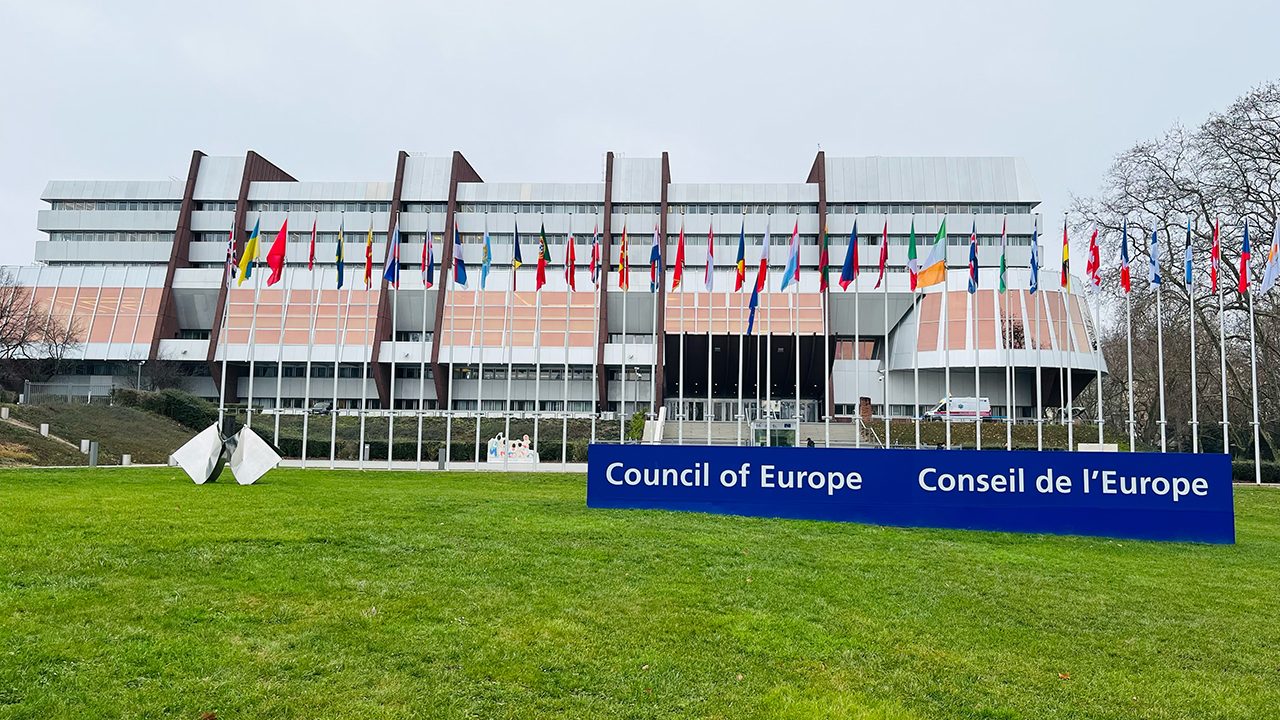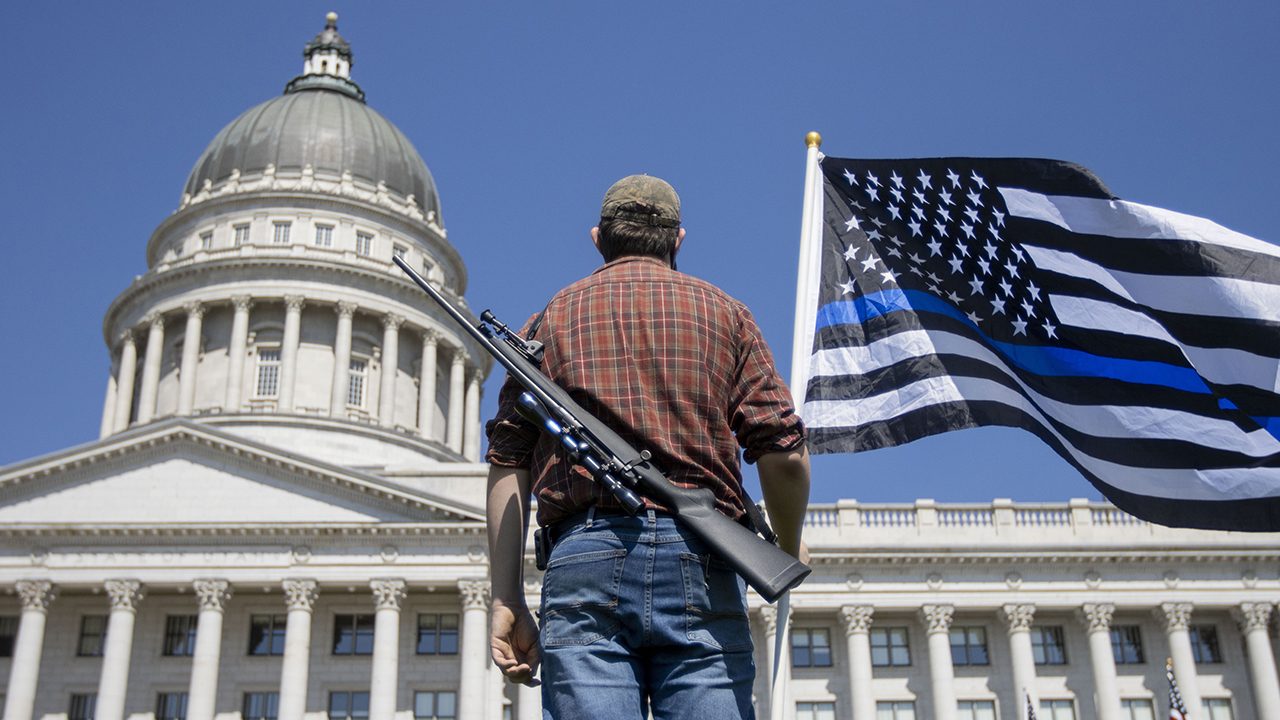
Hampton Stall is an open source intelligence researcher and analyst based in Atlanta, Georgia in the USA. Stall has followed the US militia milieu for the past few years, documenting militia groups’ actions, splits and their increasing prominence in the USA. Stall is the founder and editor-in-chief of MilitiaWatch, a journalistic platform focussing on the militia milieu. W.F. Thomas spoke with Stall after the first presidential debate on September 30, to discuss the militia movement and what it means for the US election.
Belltower.News: How would you define a militia within the context of the USA?
Hampton Stall: First, the militias in the US are almost always right-wing. Beyond that, there are three things that I look for: a structure, a schedule and a strategy. A structure means organisation akin to a military force with a hierarchy and a chain of command, even if that chain of command isn’t concrete. There is a social structure of sorts attached to these militias. With a schedule: if a militia, or a body claiming to be a militia, doesn’t meet or perform activities and lacks a regularity, you can’t consider it a militia. With strategy, there is almost always a unifying political pole around which the militias are organising. This could be something like “defence of the constitution” or the “maintenance of peace” or stopping Antifa protesters or the Black Lives Matter movement, as contemporary militia groups are attempting to do.
Legally speaking, these groups are not actually “militias”. They are paramilitaries. The term “militia” originally meant armed people within a community taking up guns to defend said community, but these modern militias often travel to other towns or states, operating outside of their locale. The original “well-regulated militia” [a right guaranteed in the Bill of Rights] was legally incorporated into the National Guard. These groups often refer to themselves as the unorganised militia, although their organisational structures do not meet the definition. Defining them is a challenge, but the definition I have is, if they’re armed, they’re meeting regularly, and they have some sort of structure, even if the structure is loose and only social, they’re a militia.
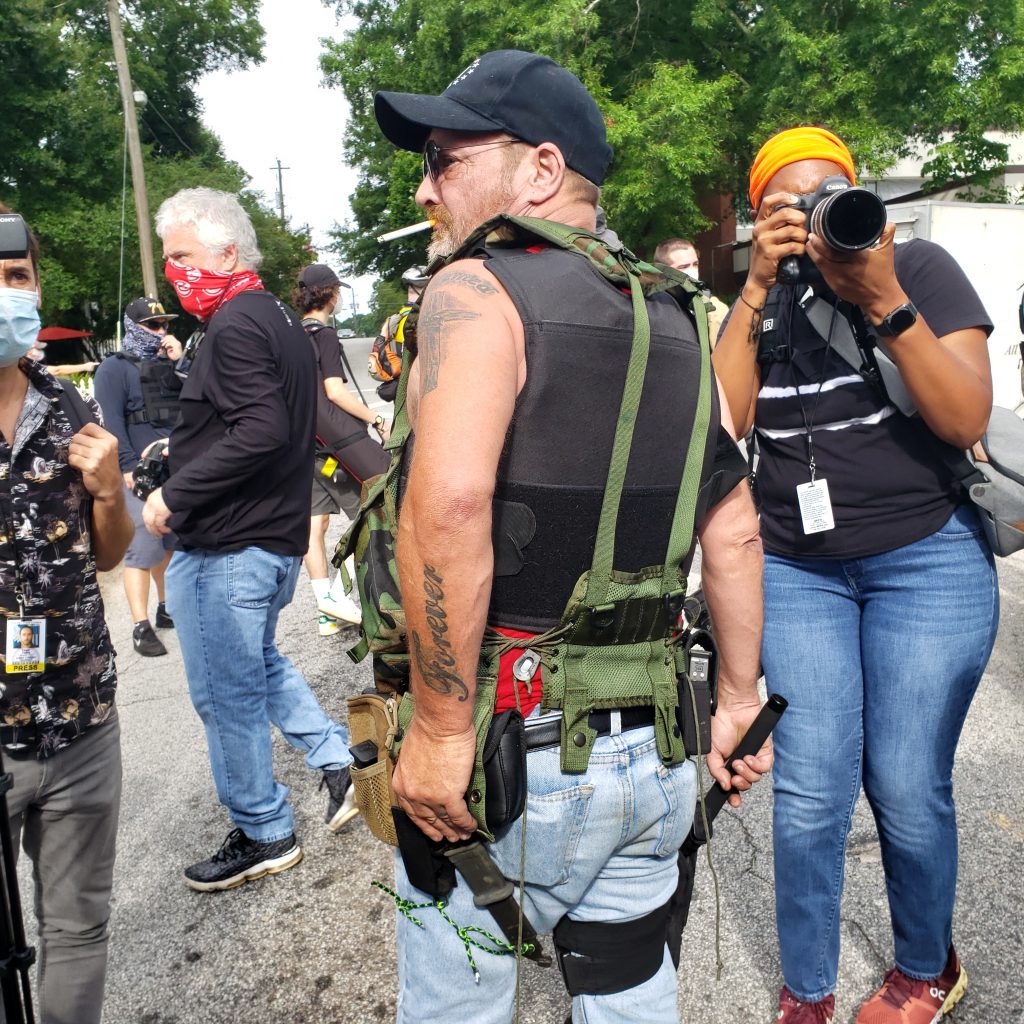
In the first presidential debate, we heard mention of The Proud Boys. Do you consider them a militia?
If we look at the Proud Boys six months ago, absolutely not. They are a fascist street movement, for a while mostly for young men. In the last couple of months, we’ve seen an increasing presence from them in certain locations, but not nationwide. They fall into a grey area, where some distinct chapters are becoming like militias. In Michigan, for example, they have been increasingly showing up with plate carriers and AR-15s strapped across their chests, coordinating directly with militia groups, which they hadn’t done as much before. When I track militia groups on Facebook, I see people with Proud Boy Facebook frames claiming to also be part of a militia.
What are the main militia groups in the US and how are they organised?
The groups I focus on are the “Three Percenters”. There are also the “Oath Keepers”, who you might refer to as “State Constitutionalists” and “Light Foot” militias. The big difference between these groups is that the “Three Percent” and the “Oath Keepers” have a fairly firm national leadership structure. They’ll claim it’s not, but there is a leader. There’s also a spokesperson and someone running their social media accounts. The Constitutionalists are a state or county level group and will often have contact with nearby state groups. There’s a lot of crossover between these groups. Organisations like the “Light Foot” and Constitutionalists have a looser political ideology compared to the “Oath Keepers” and “Three Percenters”.
Where do their names come from?
The “Oath Keepers” recruit former police officers and military veterans, encouraging members to “keep the oath” they took. The “Three Percenters” take their name from a discredited myth that only three percent of the American colonists took up arms against the British. They see themselves as similar to the people who rose up against tyranny. They came out of the anti-Obama, Tea Party movement, so the claim of “tyranny” is aimed in a very specific direction.
Do all of these militias support Donald Trump?
It depends. More generally, they are opposed to the left at large, with the current focus on Antifa and BLM. Overwhelmingly, they will vote for Trump. There are all kinds of myths around Biden being a secret socialist and George Soros directly supporting Antifa. The general right-wing stuff. In the last few years, there’s been tension between different segments of the armed right in the US on the role the federal government plays and what the response to protests should be. So at the same time, you will see these groups encouraging a crackdown on BLM protests while decrying crackdowns on anti-mask protests, which in some cases the militias have been involved in. Generally, these groups see Trump and the police as being on their side against the left and anti-Confederate, anti-white-nationalist, antifascist groups.
What do these militias actually do?
The traditional militia would spend 80 to 90 percent of their time together conducting training exercises, first-aid training or political education, or running drills out in the woods. But in the past two years, there’s been a shift towards two different types of programming. One is armed activism, where groups will show up to a demonstration, usually armed, to express some sort of political view, be it their disgust at abortion or their wish for democracy to be returned “to the people”, however they may define that. This summer, that has also meant counter-demonstrations against BLM protests. Militias will pass along information about protests happening and will respond with a mix of unarmed activists and armed militia, with a fluid crossover. One day someone will show up in full battle rattle, the next day in just a Trump t-shirt.
And the other?
The other programming is “security operations”. This involves showing up to a protest but claiming not to take a side, standing around and guarding areas, such as statues, gas stations or car dealerships. Sometimes the owner asks them to show up, sometimes it’s a bit more complicated. Lately, they’ve started showing up for campaign rallies more frequently. In the state of Georgia, several candidates who support the QAnon conspiracy ideology are “protected” by local militias.
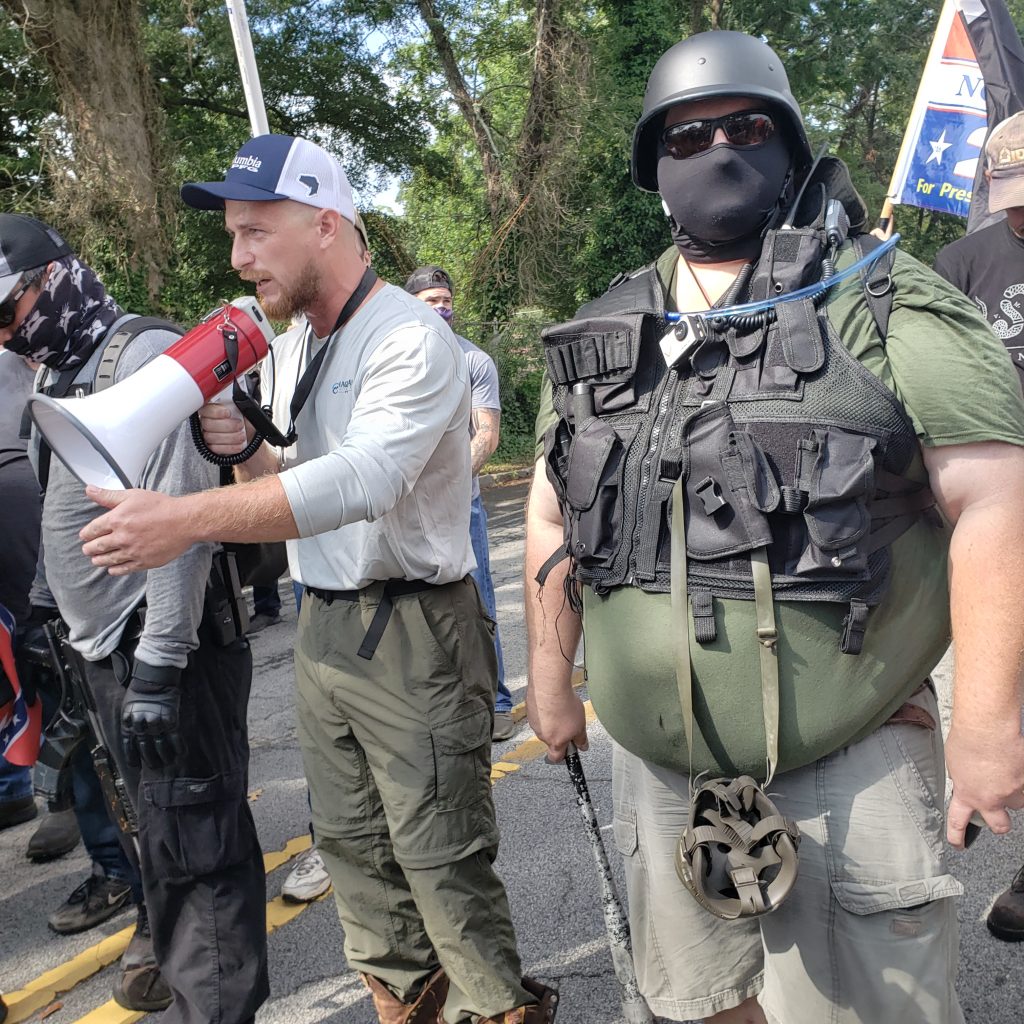
Do you see this crossing over into domestic terrorism?
Personally, I try to avoid using the word terrorism in my writing. There’s certainly a generational component here. Groups like “The Base” and “The Order of the Nine Angles” skew a bit younger. These groups and the new esoteric neo-Nazism is seen as weird by a lot of the militia groups I track.
But militias young and old do carry out violent attacks against “civilians” though?
As far as violence against civilians, there have been several instances where members of militia groups have explicitly said they’re going to commit violence against a protected group. Three members of a spin-off group from the “Kansas Three Percent Security Force” called the “Kansas Crusaders” plotted to bomb a housing complex that housed mostly Somali Muslim immigrants. The propensity to violence is very much there. Lately, there’s been an escalation in the rhetoric the groups are okay with, specifically around Kyle Rittenhouse and the member of “Patriot Prayer” who was shot. We’ve seen lots of discussions on this, with people fantasising about the violence they’re willing to commit. And that has a reinforcing effect, with the likelihood of violence growing higher. None of this is deterministic, it’s about how likely things are. And up until this point, I’m surprised there hasn’t been more fatal violence given how on edge a lot of these people are.
Foiled attacks by militias often make the headlines. But that’s likely just the tip of the iceberg of what these groups are planning.
Occasionally members of militia groups or people in the orbit of militia groups will slip up and talk to federal law enforcement, saying they’re going to do something or they’ll get caught en route somewhere, prepared to shoot protestors. For every case that is caught and publicized, it’s interesting to think what conversations happen behind the scenes. If these three guys were caught who knows how many weren’t.
What are the demographics of these militias?
Over 75 percent are white males, usually over the age of 28. It’s highly dependent upon the specific unit. Some of them have women or people of colour as members, who they feature very prominently. There are many different reasons people join and often you can tie it to specific news events, which is bizarre to see happening in real-time now.
Are you seeing an increase in membership numbers?
After the 17-year-old Kyle Rittenhouse shot three protestors, there was a huge upswing of people who wanted to join militias. Even as militias were bashed in the news, people found reasons to join, such as “I don’t want to see Antifa coming to my community”, “I just want to protect my way of life”, “I’m not afraid to say I love America”. All these different reasons coalesce around the same basic worldview. Then there are new groups like the “Boogaloo Boys” that are highly attractive, aesthetically. I don’t think it’s a militia itself, more so an aesthetic and culture around which people will identify themselves and to one another. It is parallel to the militia movement, although it does overlap with the movement. And some traditional militia leaders have tried to use the Boogaloo aesthetic because it’s attractive and they see it as a wave to jump on.
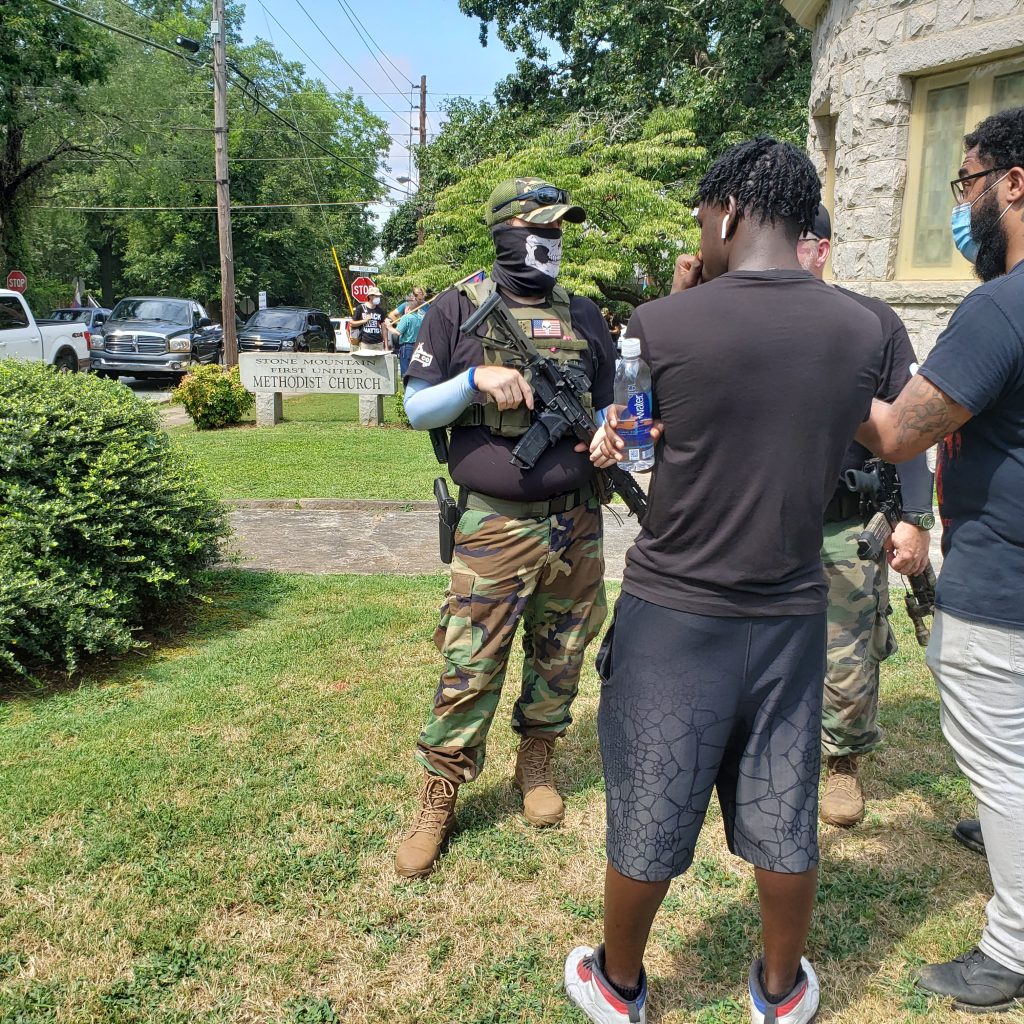
What do these militias mean for the upcoming election? Will they take action if the election result isn’t the one they had hoped for?
First off, I’ll say this. In the US, we’re accustomed to getting presidential election results on election night. This year, with the Covid-19 pandemic and the surge in mail-in ballots, it’s going to take more time. The period between election day and the final result will be a highly volatile period. Even if Biden wins, and does so substantially, Trump may not agree to a peaceful transfer of power. Some of his comments made in the first debate reinforce this potential trajectory. Statements like that aren’t out of character for Trump, but hearing it said explicitly is spurring on a lot of these people. It gives them the courage to act, which they might otherwise not have had.
The courage to act violently?
Yes, because they feel the President is behind them. On the night of the first debate, The Proud Boys had already mocked up “Stand Back and Stand By” t-shirts – the words Trump used in the debate. And the transition period after the election is conducive to a long period of political uncertainty. There have been recordings of different people in the militia scene making explicit threats to the press, like “If Trump loses, I’m headed to DC with a rifle.” We have to assume that what people are willing to say out loud to journalists is just the tip of the iceberg.
We’ve talked about some neo-Nazi groups. Do you see a growing trend towards the idea of “leaderless resistance”, such as with groups like “Atomwaffen Division”?
Yes, absolutely. The Turner Diaries made the concept well-known in the US neo-Nazi scene. The book provides an important narrative for these groups, a narrative that has been recrafted and redrafted until its ideas become an acceptable way to fight “tyranny”. Militia members aren’t reading this book, although “Atomwaffen Division” certainly is. But there are similarities in the tales these groups tell about society, about how a lone actor can change the world.
That’s something seen in the crystallization of support behind Kyle Rittenhouse. The 17-year-old killed two Black Lives Matter protesters and wounded a third.
He’s already being called “Saint Kyle” in these circles. For one of my projects, I’m gathering memes about Kyle Rittenhouse used by the right, and it’s incredibly alarming to see how much of a living martyr he’s become, even though he hasn’t spoken to the press. They have shirts that say, “Free Kyle” or “Kyle did nothing wrong”. Back to the idea of leaderless resistance. There’s been a devolution, where militias such as the Kenosha Home Guard put out muster calls inviting anybody with a gun to show up. Kyle Rittenhouse was not part of the “Kenosha Home Guard”, he responded to their call as an individual and made decisions on his own. That sort of structure is going to become more of a pattern, especially as more protests occur.
There’s a difference between what you might call a lone wolf and individual actors. A lone wolf will show up and commit and act of violence, but they operate separately. What’s going to become more important are the individual actors, who operate with other people they view as on their side, but to whom they are not accountable. A militia with a firm structure and good relationships between members is by no means safer, but it’s different than these individuals showing up and assuming they have carte blanche to act and that the people there will back them up.
Facebook and other social media sites have reacted and cracked down on militias. Has that helped?
It’s certainly reduced the immediate organising capacity in these groups. The flip side is they are moving to very private, closed off spaces on the internet, where more violent discussions may flourish. Their organising spaces are getting more private without any larger accountability. That’s not to say Facebook has done a perfect job with militias: the page of the “Kenosha Home Guard” was reported around 700 times.
What will you be doing on election night?
Not watching TV! Probably playing with my cat.
